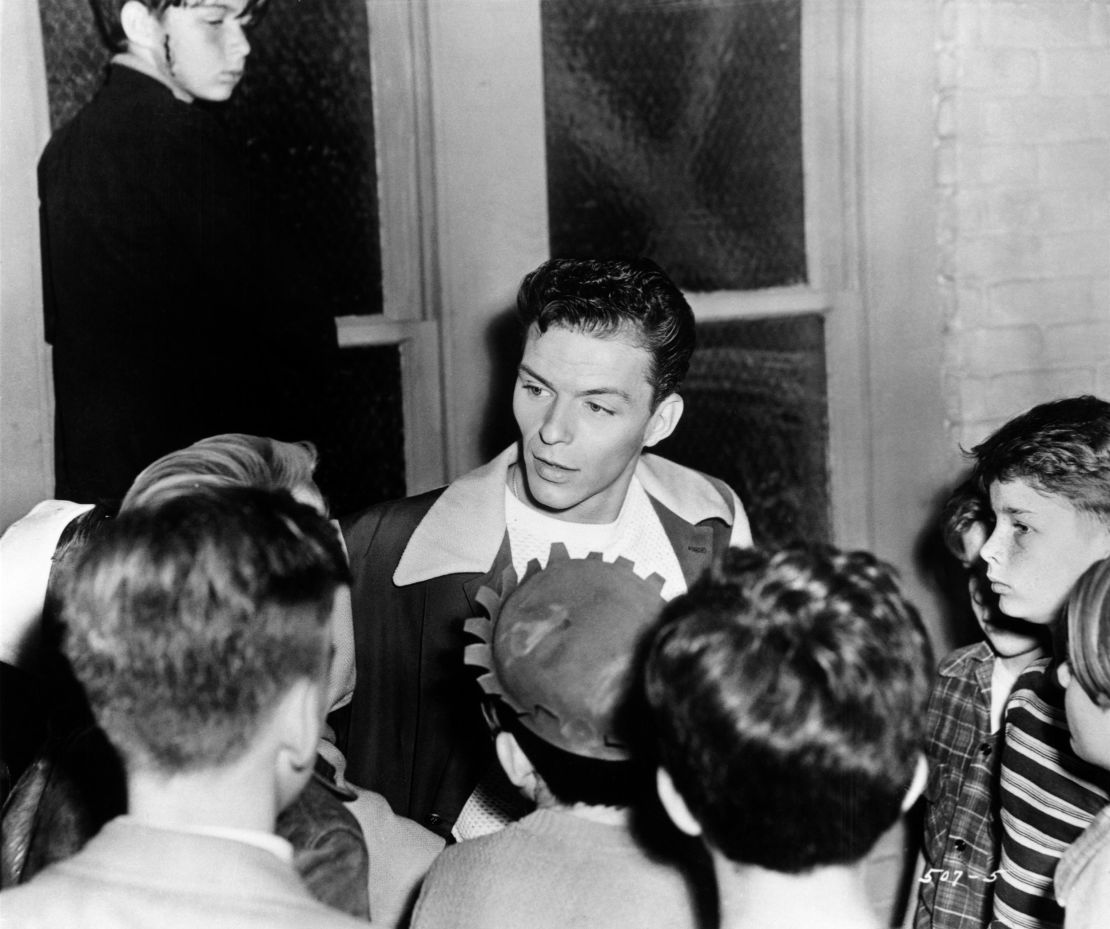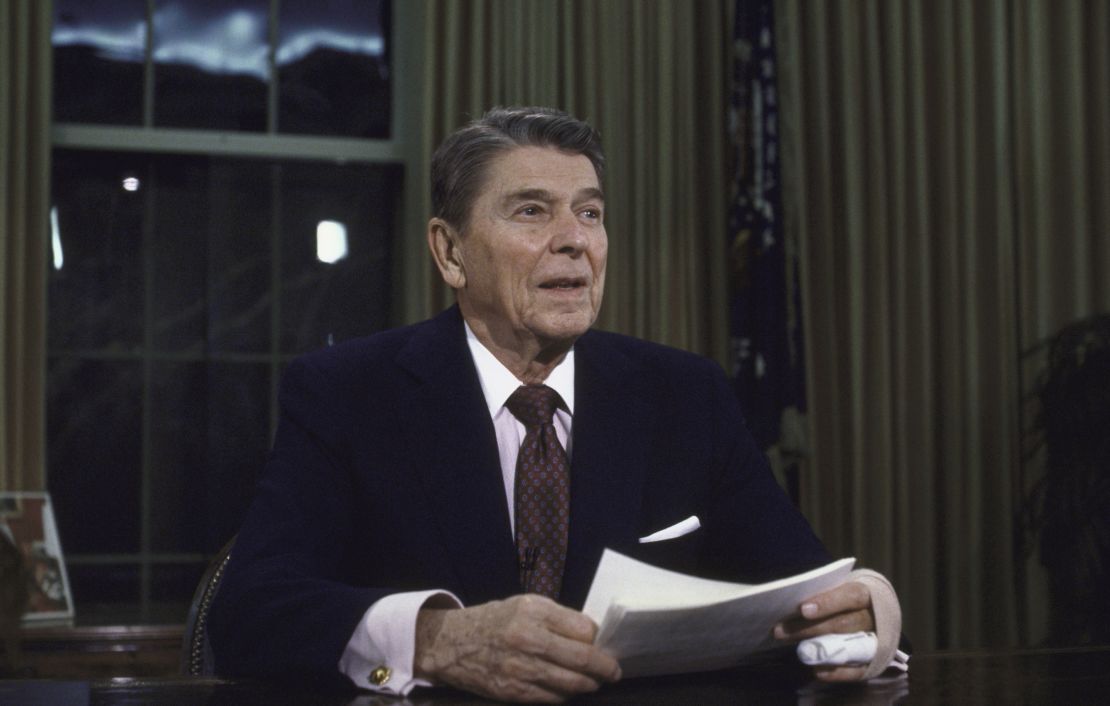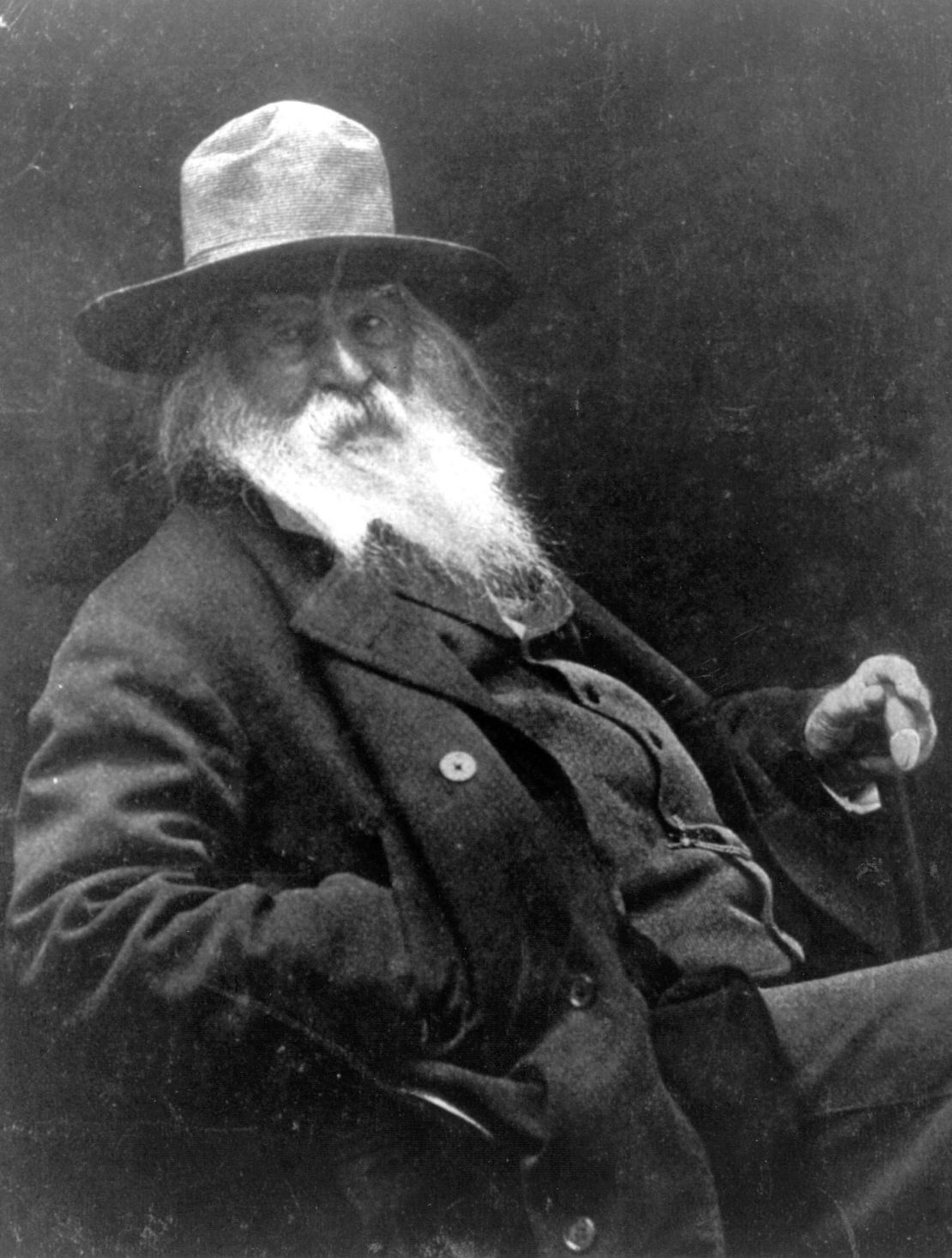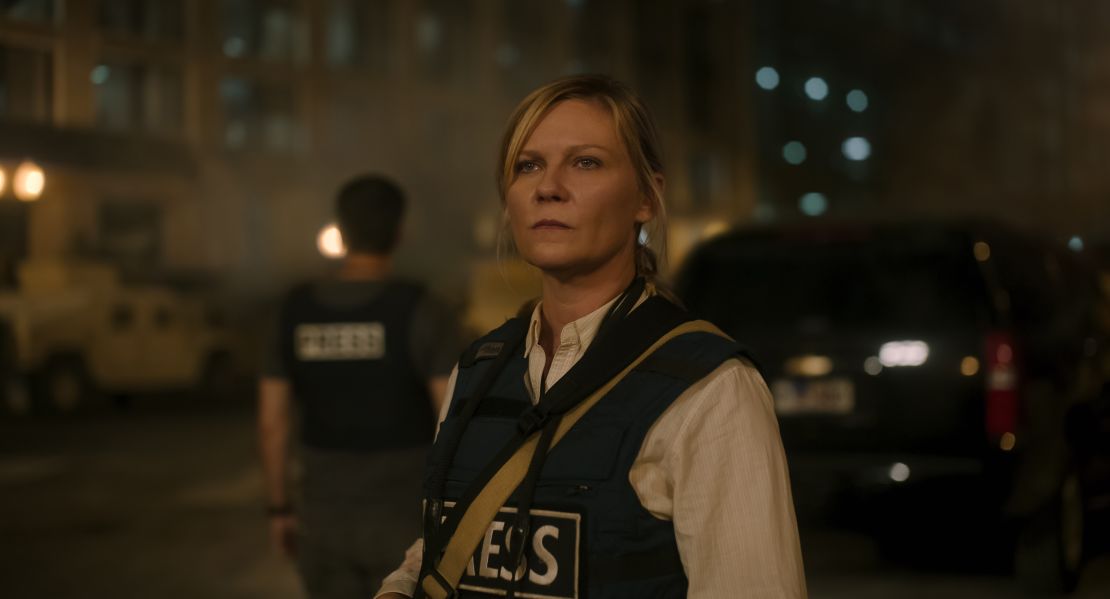A month after Russia invaded Ukraine in 2022, the historian Yuval Noah Harari made a bold claim that seemed delusional.
Harari made his claim in an essay on the heroism of the Ukrainian people. He praised embattled Ukrainian president Volodymyr Zelensky, who refused to flee his country when death seemed certain, telling his would-be rescuers that he needed ammunition, not a ride. He marveled at the outnumbered Ukrainian soldiers on Snake Island who told a Russian warship to “go f**k yourself,” and the civilians blocking Russian tanks with their bodies.
“Nations are ultimately built on stories,” said Harari, author of “Sapiens: A Brief History of Humankind.” “Each passing day adds more stories that Ukrainians will not only tell in the dark days ahead, but in the decades and generations to come … This is the stuff nations are built from. In the long run, these stories count for more than tanks.”
But there’s another type of story that’s gained traction in the US — the kind that can cause a nation to unravel. The new hit movie, “Civil War,” which has earned more than $100 million worldwide at the box office, is the latest example of a disturbing trend: We no longer seem to know how to tell well-crafted stories that counter those that depict American democracy as doomed.
In “Civil War,” tanks trample democracy. The film depicts a near-future America that has been torn apart by seceding regions and militia violence. It features a fascist leader in the White House, an attempted coup and Americans casually killing one another in the streets. One critic called it writer-director Alex Garland’s “very in-your-face attempt to imagine the unimaginable in America.”
It’s hard to imagine any other future for the United States when you consider the popularity of movies like “Civil War.” Most of the stories about the state of America that gain traction in popular culture are the ones that end in its failure. They’re the opposite of the hopeful, unifying stories any country needs to overcome tough times.
“Civil War” is part of a growing entertainment genre that, to borrow a phrase from former President Donald Trump, could be called “American carnage.” Dystopian movies and TV shows like “The Walking Dead,” “The Purge,” “The Hunger Games,” “The Handmaid’s Tale” and “The Last of Us” all imagine a hellish future in America triggered by an environmental, political or civic collapse.
There’s nothing wrong with dystopian thrillers. They serve as cautionary tales and are as old as the book of Revelation. But the messages they send may be more dangerous than the violence depicted onscreen: The collapse of democracy is inevitable. Americans can never transcend their tribalism. Resistance is futile.
There’s something wrong when we churn out stories about superheroes in spandex banding together from different galaxies to save the universe, but we can’t tell a popular story that shows Americans coming together to save our country.
‘Casablanca’ offers a lesson for today’s Americans
It didn’t used to be this way. There was another time when democracy in America was under threat, and filmmakers responded by making stirring movies aimed at lifting Americans’ spirit and equipping them for the battles ahead.
Consider “Casablanca,” the classic 1942 film. It proves that you can tell a gripping story about patriotism without being sappy or boring. In the film, Humphrey Bogart plays Rick, the cynical owner of a Moroccan nightclub at the onset of World War II. The movie is remembered today for its classic lines (“Here’s looking at you kid”; “We’ll always have Paris”; “Round up the usual suspects”).

Yet there’s another classic line uttered by Rick — “I stick my neck out for nobody” — that hints at deeper reasons why “Casablanca” was made. The film is set before Pearl Harbor, when many Americans didn’t want to get involved in a European conflict. Adolf Hitler’s Nazi war machine seemed unstoppable. Fascism was on a global march. Democracy’s future seemed grim.
Rick responds to the impending crisis with apathy and cynicism. But when his old flame, played by actress Ingrid Bergman, walks into his club one night, she not only rekindles their romance but his idealism.
“The movie was a patriotic rallying cry that affirmed a sense of national purpose,” wrote Cristóbal S. Berry-Cabán in an essay. “The film emphasized group effort and the value of individual sacrifices for a larger cause. It portrayed World War II as a peoples’ war, typically featuring a diverse group of people and ethnic backgrounds who are thrown together, tested, and molded into a dedicated (force) fighting fascism.”
Other films of that era made similar storytelling choices. Legendary Hollywood director Frank Capra made a series of seven patriotic films during World War II called “Why We Fight” that rallied Americans in the fight against fascism.
The entertainer Frank Sinatra, a paragon of mid-20th century American masculinity, starred in a short film called “The House We Live In.” It would be labeled “woke” today. In the film, Sinatra intervenes when he sees a group of youths chasing a Jewish boy. He tells them that “religion makes no difference, except to a Nazi or someone who’s stupid.” The film was eventually selected by the Library of Congress as being “culturally and historically” significant.
Sinatra would later record a song with the same title as the film, which he would perform throughout his career. It included lines like, “The faces that I see. All races and religions. That’s America to me.”

Other World War II-era films like “Don’t be a Sucker,” which emphasized racial and religious tolerance in America, emphasized the same message. It went viral after the 2017 neo-Nazi rally in Charlottesville, Virginia.
Those black-and-white films may seem dated and idealistic in an America that has been through the Vietnam War, Watergate, 9/11 and January 6. But a country needs a unifying story like a human being needs oxygen.
“Stories are essential to holding a nation together,” says Kermit Roosevelt III, a historian and author of “The Nation That Never Was: Reconstructing America’s Story.” “You have to have something that motivates people to make sacrifices for the nation. If you’re going to fight a war, you have to have people who are willing to lay down their lives. But we more often call on people to make sacrifices for others, to bear burdens, promote justice and help out the less fortunate.”
That doesn’t mean we return to the days of making clumsy propaganda films. But Roosevelt says we should keep in mind that most stories contain some elements of propaganda.
“We have this idea that propaganda is bad or ideology is bad,” Roosevelt says. “But I think that history and education are inherently ideological, and there’s a perspective there and you’re trying to impart lessons.”
What united Reagan and Obama
Some of America’s most gifted political leaders knew that lesson well. Two of the most consequential presidents in recent memory — Ronald Reagan and Barack Obama — were master storytellers. They told stories that made Americans believe in democracy, in one another and in their country’s future.

Reagan’s skills were on display when he told a story about American vitality in his farewell speech that echoed Sinatra’s “The House We Live In.” He said the source of America’s greatness was immigrants.
“While other countries cling to the stale past, here in America we breathe life into dreams,” Reagan said. “Thanks to each wave of new arrivals to this land of opportunity, we’re a nation forever young, forever bursting with energy and new ideas, and always on the cutting edge, always leading the world to the world to the next frontier. This quality is vital to our future as a nation.”
Former President Obama cited his personal story as a reason to believe in America, despite the country’s history of not living up to its ideals. The son of a White mother from Kansas and a Black father from Kenya, Obama said his journey to national prominence was proof that the American dream was possible.
“I stand here knowing that my story is part of the larger American story, that I owe a debt to all of those who came before me, and that, in no other country on Earth is my story even possible,” he during his speech at the 2004 Democratic National Convention, which would eventually catapult him to the White House.
It’s easy to dismiss Reagan’s and Obama’s storytelling as the product of clever speechwriters. What candidate doesn’t call America great, or vow that anything is possible in the land of the free and home of the brave?

But the dominant American political figure of recent years does not typically tell such unifying stories about his country. Former President Trump coined the term “American carnage” during his 2017 inaugural address. He routinely describes an America that more resembles the failed state depicted in the “Civil War” movie, with his declaration in January that “We are a nation in decline, we are a failing nation.”
Telling that kind of story hasn’t appeared to hurt Trump any more than it hurt the makers of “Civil War.” And, truth be told, stories of American greatness can ring hollow to the descendants of enslaved Americans, the Japanese Americans interned during World War II and those dismayed today by politicians and judges who disregard democratic norms.
How can we tell a story today that doesn’t ignore the brutality of American history but still inspires hope for the future?
There’s another figure from the past who may help us.
Making the ‘emotional case for democracy’
Walt Whitman, the 19th century writer dubbed “the poet of democracy,” said that America was his greatest poem. Through poetry, Whitman did what so many seem incapable of today — he made a multiracial, multireligious democracy in America visceral and exciting, not a civics lesson.
In “Songs of Myself,” Whitman vividly described America as “the Nation of many nations,” and said of himself and his country,” “Of every hue and caste am I, of every rank and religion.”
Read Whitman today and one is struck by his expansive definition of what it means to be an American. No one is excluded — he treats the “boatman and clam-diggers, the farmer, the deacon, the runaway slave, the prostitute and the president with equal reverence, “For every atom belonging to me as good belongs to you.”

The historian Ian Beacock said Whitman offers an answer for those who wonder how they can defend democracy against stories that predict its demise. He suggests they take Whitman’s approach: “State an emotional case for democracy that appeals as much to those who already possess power as to those yet without it.”
It starts with being honest about the appeal of other modes of government, like fascism, he says.
“It’s obvious that being free and equal is better than being dominated,” Beacock wrote.” But is it better than dominating? Exerting power over others is a seductive feeling, too, if a dark and dangerous one.”
Many democracies simply “unravel” because their citizens get complacent, Beacock says. Democracy is hard to sustain because of its constant demands for compromise. People often go shopping for alternatives that seem like less work, he says.
Whitman told stories about democracy that engaged people’s feelings, not just their intellect, Beacock says.
“This is perhaps Whitman’s core contribution to democratic thought and practice: the reminder that democracy’s defenders mustn’t neglect political feelings (“Logic and sermons never convince”) and that self-government must appeal to the human heart if it is to last long. “
We need a new way to tell the American story
The Austrian philosopher Ivan Illich was once asked about the most revolutionary way to change a society. He said:
“Neither revolution nor reformation can ultimately change a society, rather you must tell a new powerful tale, one so persuasive that it sweeps away the old myths and becomes the preferred story, one so inclusive that it gathers all the bits of our past and our present into a coherent whole, one that even shines some light into our future so that we can take the next step…”

How Americans in 2024 decide to tell their national story is up for debate. What shouldn’t be up for discussion, though, is the need for such stories. Isn’t it time we tell a new story of a future America where the White House isn’t going up in flames and citizens aren’t murdering one another?
The box office success of “Civil War” ensures, though, that more “American carnage” stories are likely headed our way. Though the film doesn’t take any political sides, it amplifies the same message that autocrats in Russia and China are making through their propaganda: America is hopelessly divided and degenerate, and democracy is doomed.
Maybe it’s time to rediscover what Americans of another era knew. Those old black-and-white films about what makes America special may seem corny now. But they understood that you must defend democracy not only with tanks, but with stirring tales that reverberate for generations to come.
If you believe democracy is under threat in America, find a “new powerful tale” that inspires us to believe it has a future.
But don’t dispense platitudes or give us a civics lesson.
Tell us a story.
